Abstract
Immune-adherence has been demonstrated by haemagglutination with four soluble antigens, two polysaccharide and two protein.
A zone phenomenon occurs with the immune-adherence of soluble antigens similar to that found with other antigen-antibody reactions.
It is suggested that the failure of immune-adherence with two soluble antigens, despite marked fixation of complement, is due to the failure of the antigen-antibody complexes to fix all four components of complement.
Full text
PDF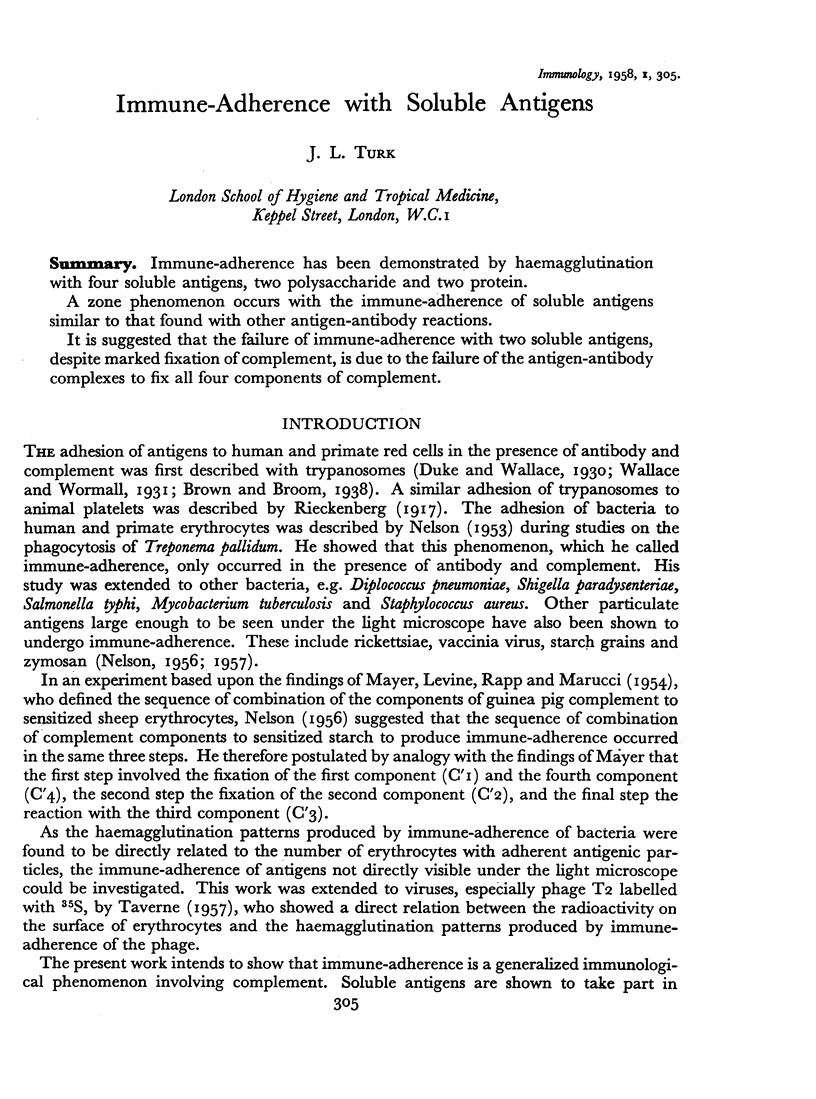
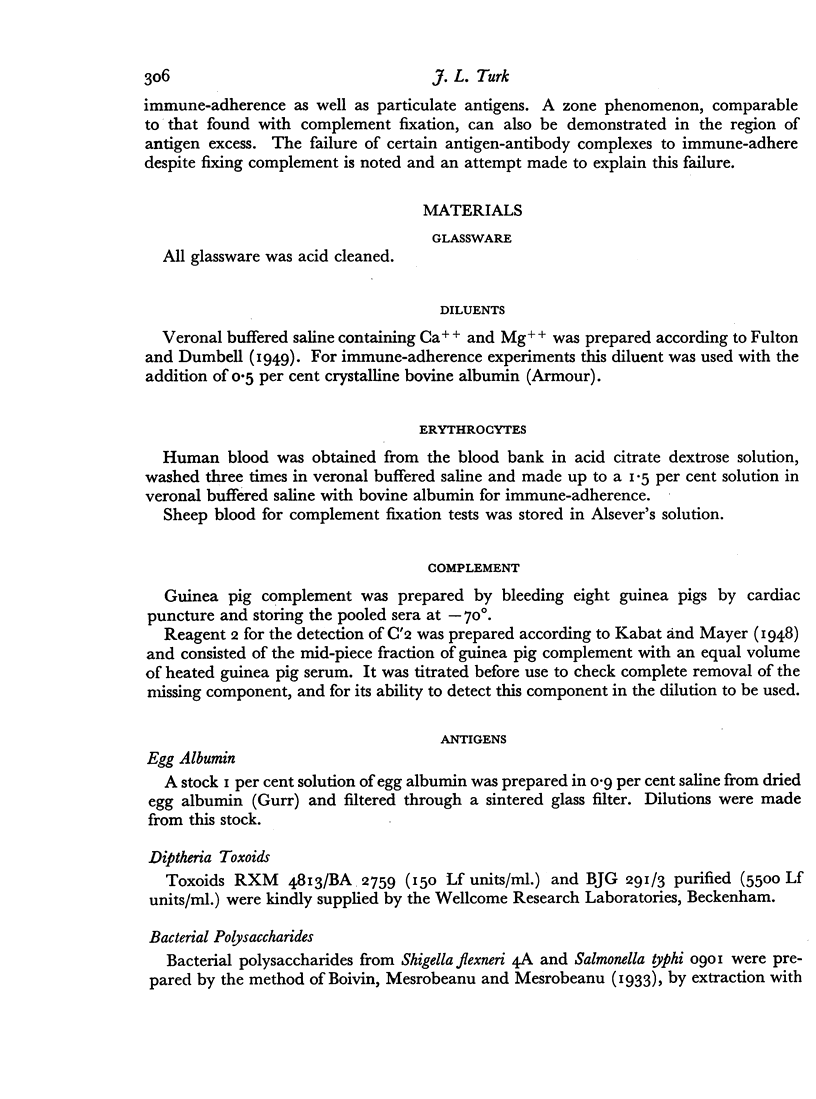
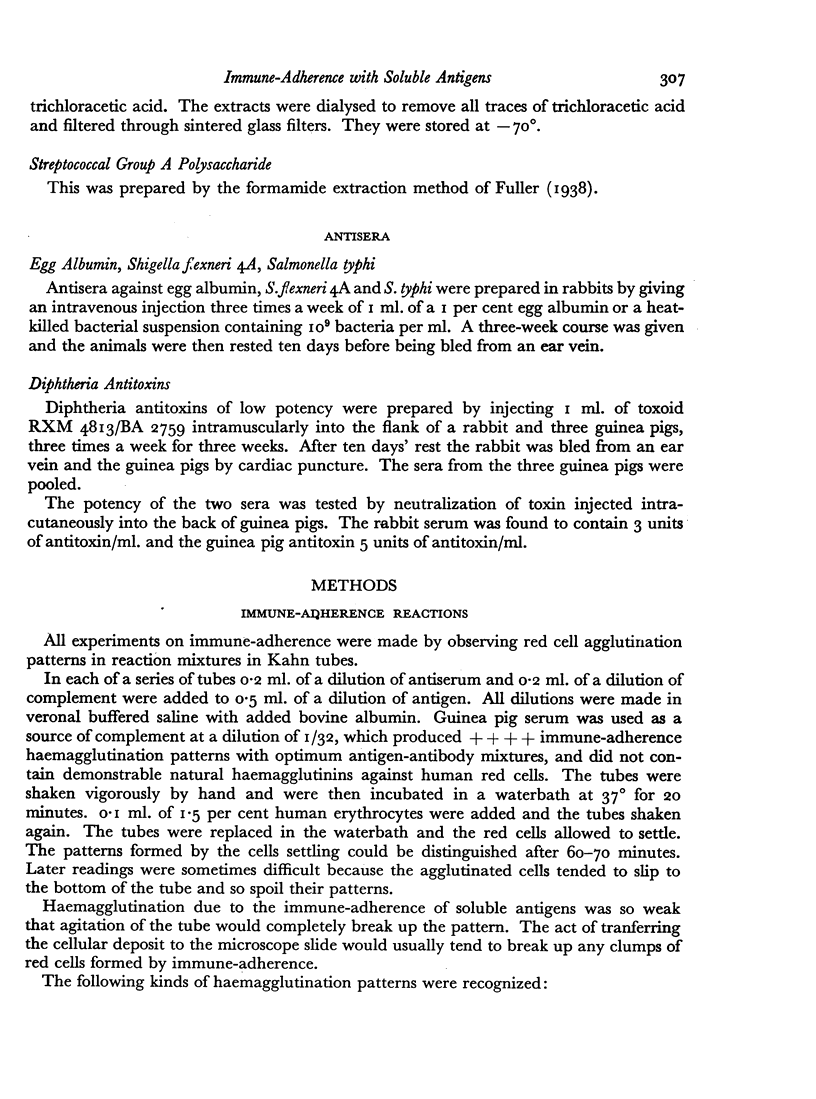
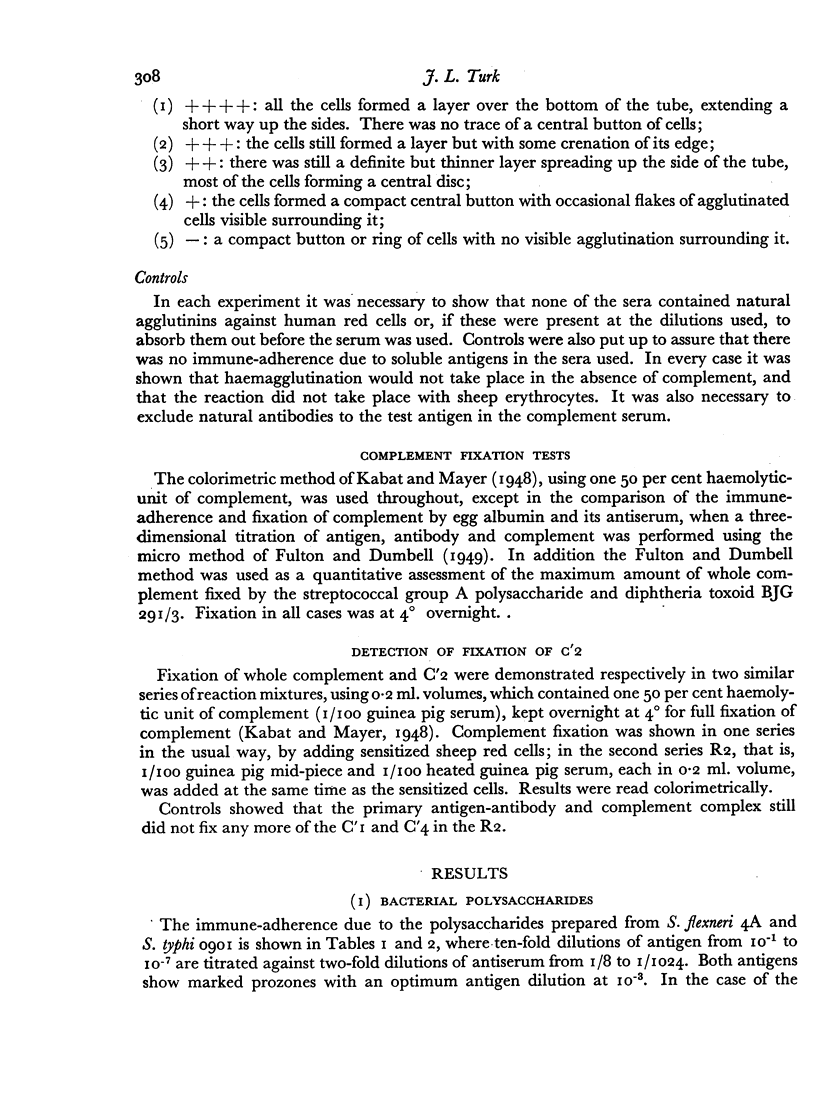
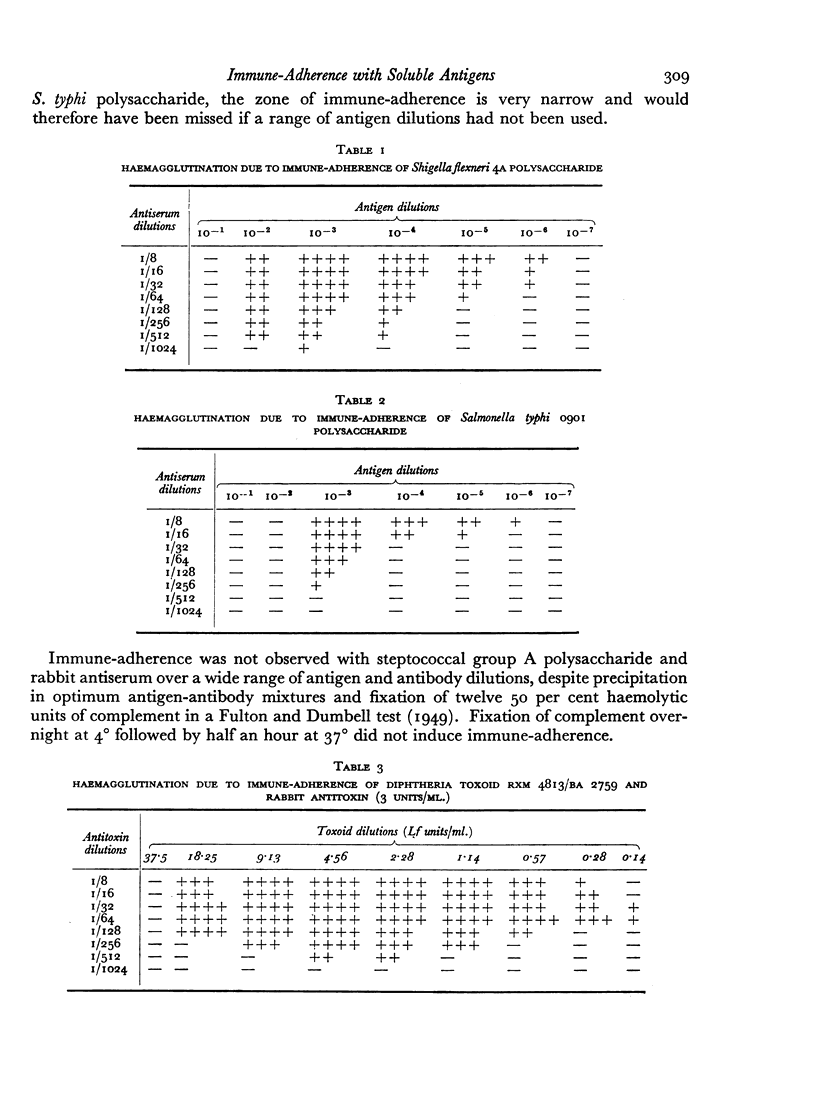
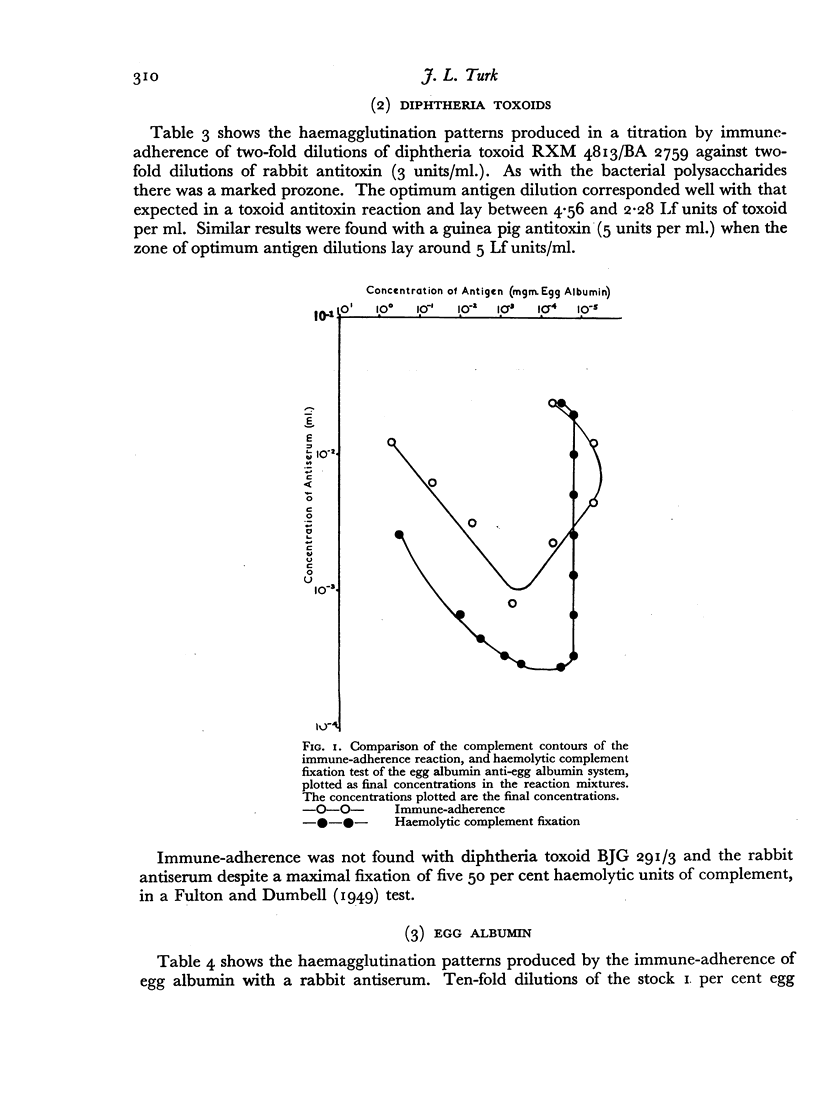
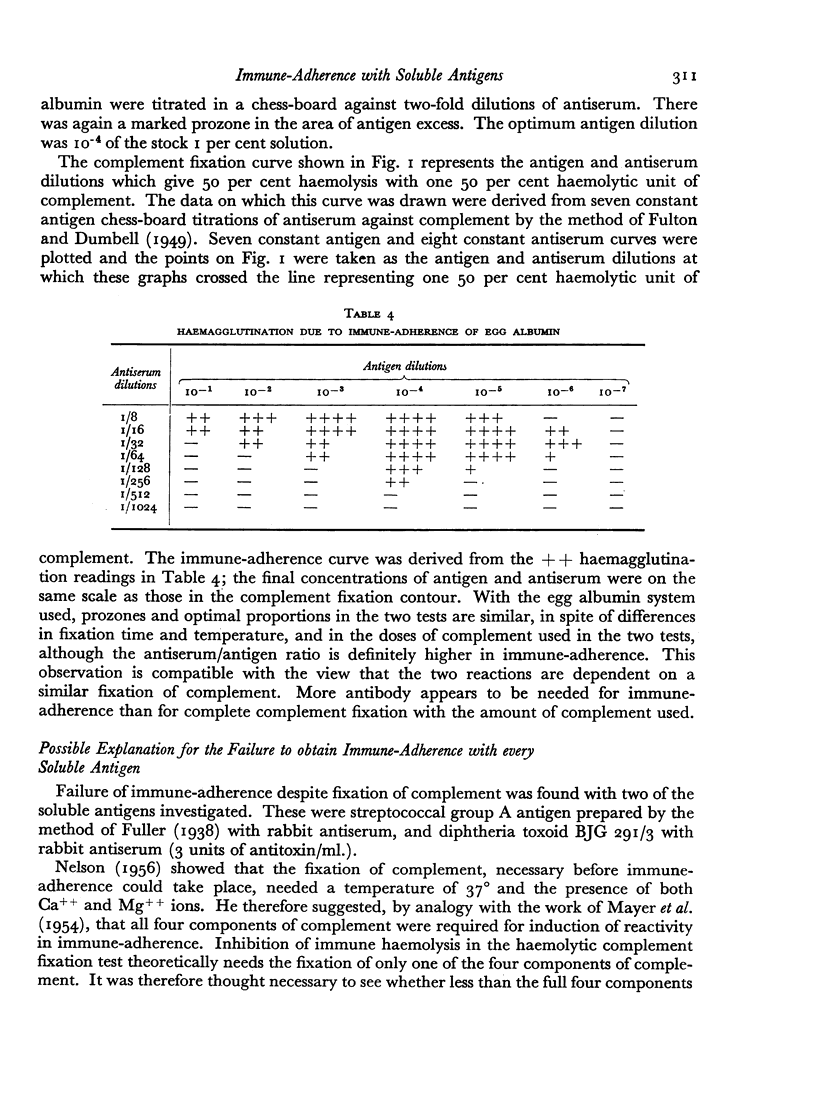
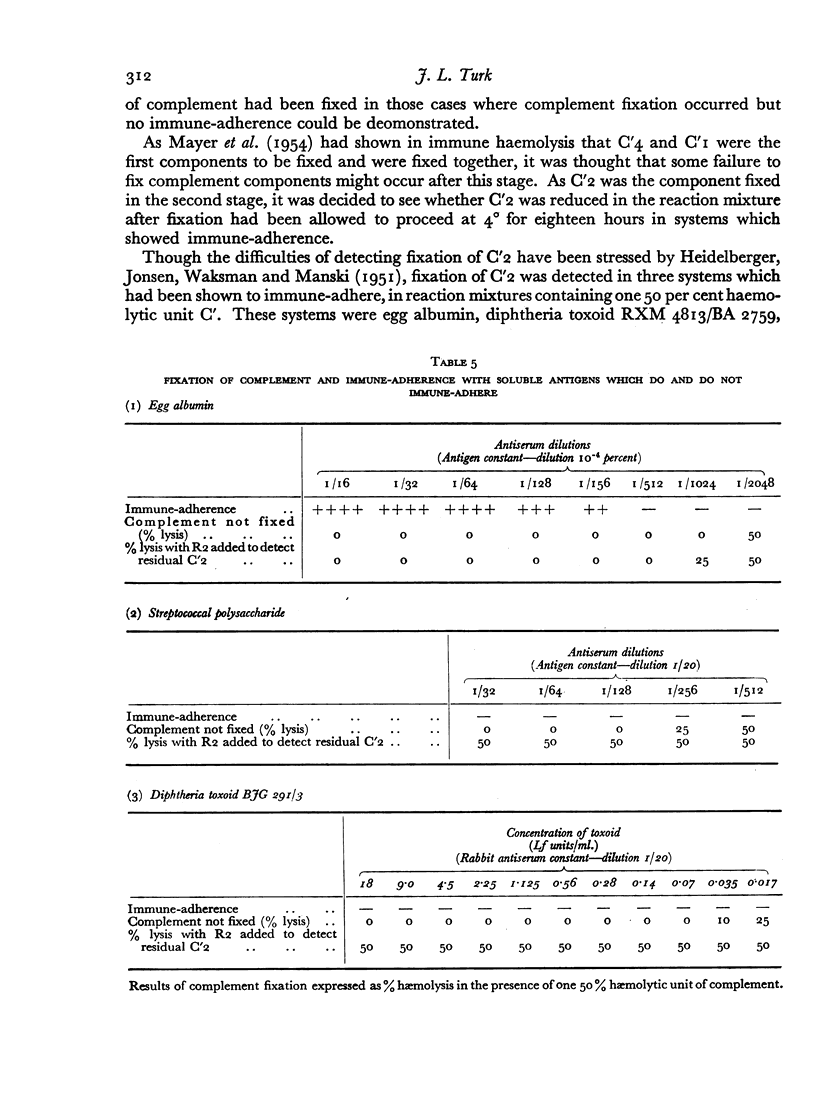
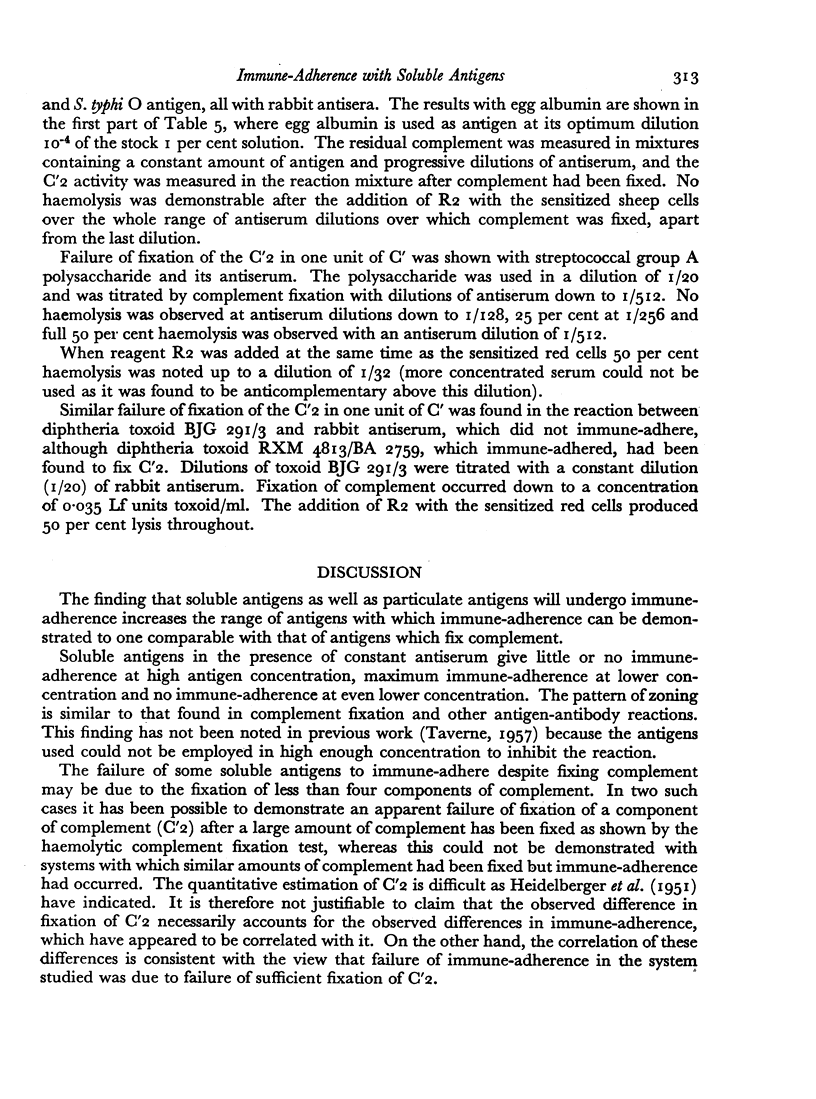
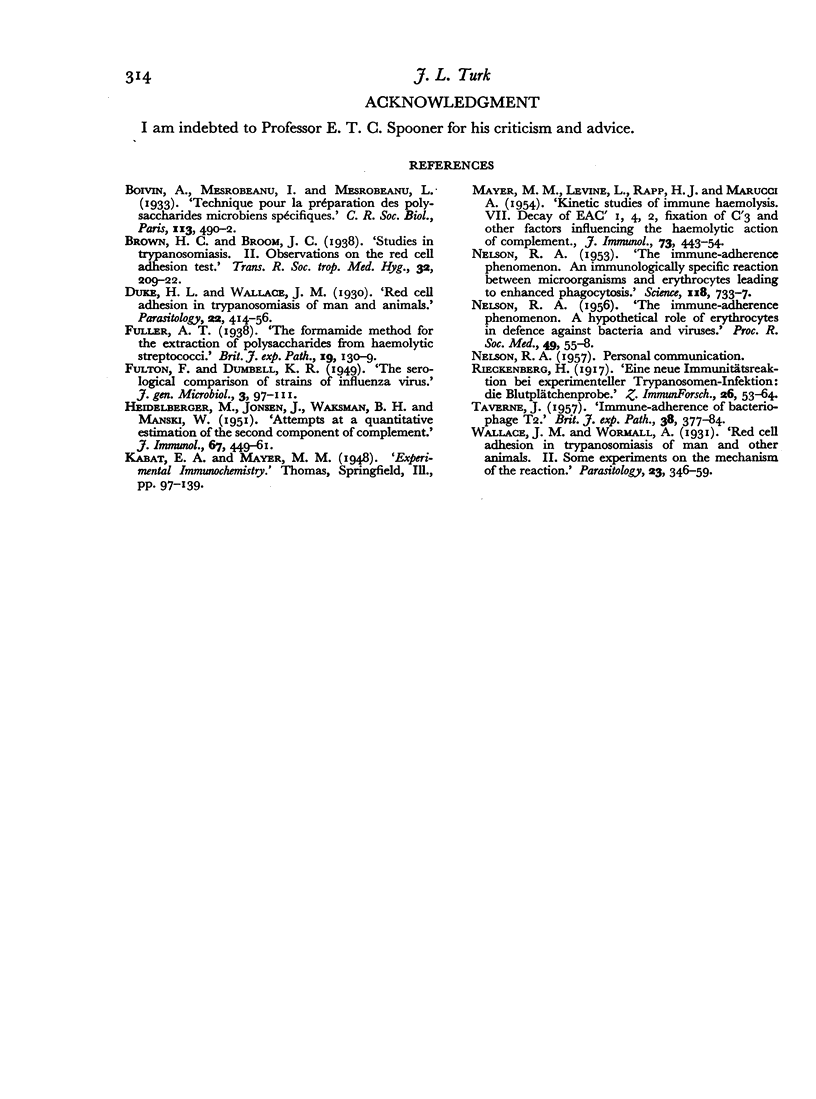
Selected References
These references are in PubMed. This may not be the complete list of references from this article.
- HEIDELBERGER M., JONSEN J., WAKSMAN B. H., MANSKI W. Attempts at a quantitative estimation of the second component of complement. J Immunol. 1951 Dec;67(6):449–462. [PubMed] [Google Scholar]
- MAYER M. M., LEVINE L., RAPP H. J., MARUCCI A. A. Kinetic studies on immune hemolysis. VII. Decay of EAC'1, 4, 2, fixation of C'3, and other factors influencing the hemolytic action of complement. J Immunol. 1954 Dec;73(6):443–454. [PubMed] [Google Scholar]
- NELSON R. A., Jr The immune-adherence phenomenon; an immunologically specific reaction between microorganisms and erythrocytes leading to enhanced phagocytosis. Science. 1953 Dec 18;118(3077):733–737. doi: 10.1126/science.118.3077.733. [DOI] [PubMed] [Google Scholar]
- TAVERNE J. Immune-adherence of bacteriophage T2. Br J Exp Pathol. 1957 Aug;38(4):377–384. [PMC free article] [PubMed] [Google Scholar]


